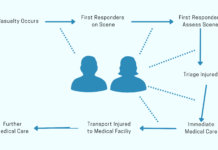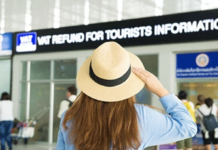In January, the Atlanta-based hip-hop producer TM88 received an urgent call from the rapper Lil Uzi Vert, who was craving a beat reminiscent of his hit “XO Tour Llif3.” Over the next few days, the two men spent hours on FaceTime perfecting a track together. “He’s like, ‘take that out [of the beat], do this,’ I’m doing it, sending it back,” TM88 recalled recently. “I’m telling him what I don’t like about the lyrics. The whole time I was babysitting my daughter.” The result was “P2,” the closing track on Uzi’s blockbuster Eternal Atake (and one of the most popular songs on the album).
Two months ago, writers and producers could choose to work this way — though most opted not to. While the technology to accomplish tele-songwriting has been available for years, most hitmakers have relied on a more old-fashioned model, hunting for musical inspiration in a room with their peers. But due to the rise of COVID-19, in-person songwriting sessions have been largely brought to a halt. That means writing over Zoom or FaceTime is pretty much the only option available for those who are still hoping to create music collaboratively in real time.
The aspects of Zoom or Facetime or Google Hangouts that can be annoying for civilians — faulty audio, everyone talking over everyone else — can be deadly for songwriting. “There’s the delay on Facetime — you’re playing the beat, and they’re bobbing their head, but it’s completely off,” says Jazelle Rodriguez (David Guetta, Cheat Codes). “Writing [songs] is a lot about listening and reacting in real time,” adds PJ Harding (Noah Cyrus, Chromeo). “If you’ve got a one-second delay, that’s a vibe-killer, a deal-breaker.”
Because of these potential hurdles, most of the writers who spoke for this story say that they mainly attempt remote sessions with people they already consider friends. “You’re speaking over each other, or someone’s trying to sing harmony but it’s not in real time so it doesn’t sound great,” explains Mags Duvall, who recently signed a publishing deal with Big Family. “When we’ve known each other for a long time, that’s not as awkward.”
Another challenge of working remotely is that it tests the limits of writers’ skill-sets. “A lot of people are used to having an engineer or a producer who knows how to track and record,” says Antonio Dixon (Beyoncé, Ariana Grande). That means that if they want to add background harmonies to a track, for example, they may not be able to do that on their own.
But the songwriting world is not completely unprepared for stay-at-home restrictions. For more than a decade, writers have been starting hits on the Voice Memo app and slinging them from one collaborator to the next in emails and texts; the demo gains detail and density as it caroms around the internet. This way of working is especially common in rap, R&B, dance music, and parts of Top 40 pop.
“It’s not the same. But that’s what we have.”
Forever, as Prince liked to point out, is a mighty long time. But it is easy to imagine that even after COVD-19 dissipates, the pandemic may well have long-term impacts on the professional songwriting industry. Writers used to working in big groups may realize that they don’t need as much help as they once thought; fewer collaborators means less paperwork and more publishing income. “We’re used to seeing seven and ten writers on songs,” Cyphert continues. “Maybe this will spawn a bunch of 100 percenters [when one writer is responsible for a whole song] or more 50-50s [a pair of writers] — the way it used to be.”
And some writers predict that months of quarantine will make remote collaboration, which seems strange to many of their colleagues now, commonplace. “The industry will grow to where remote sessions become more normal,” Henig suggests.
“It evens the playing field — anyone can be anywhere,” she says. On the other hand, as the professional songwriting community acclimates to remote collaboration, this might make in-the-room writing sessions look increasingly quaint.
ANALYSIS
As this article points out, zoom and video conferencing has become one of the only means that musical artists can meet to work on projects. There are many aspects of video conferencing that greatly impact the creative liberties that musical artists have when collaborating or even making music at all. Even if you are strictly a lyricist/vocalist and may not worry as much about audio delay, you may be reliant on a producer to provide the musical backing for your song which is not open to every individual. There are financial bars and equipment/software requirements that prevent these artists from being able to express their musical ideas. For musicians that thrive in environments where they can improvise together or express musical ideas in the moment, video conferencing is incredibly cumbersome if not unusable.
An interesting point that this article makes is that using video conferencing can create an awkward atmosphere for artists that are not as familiar with one another, leading them to only work with people they have better relationships with. This is detrimental for artists that do not have as wide of a network, and in turn can heavily impact their professional decisions when making music.




